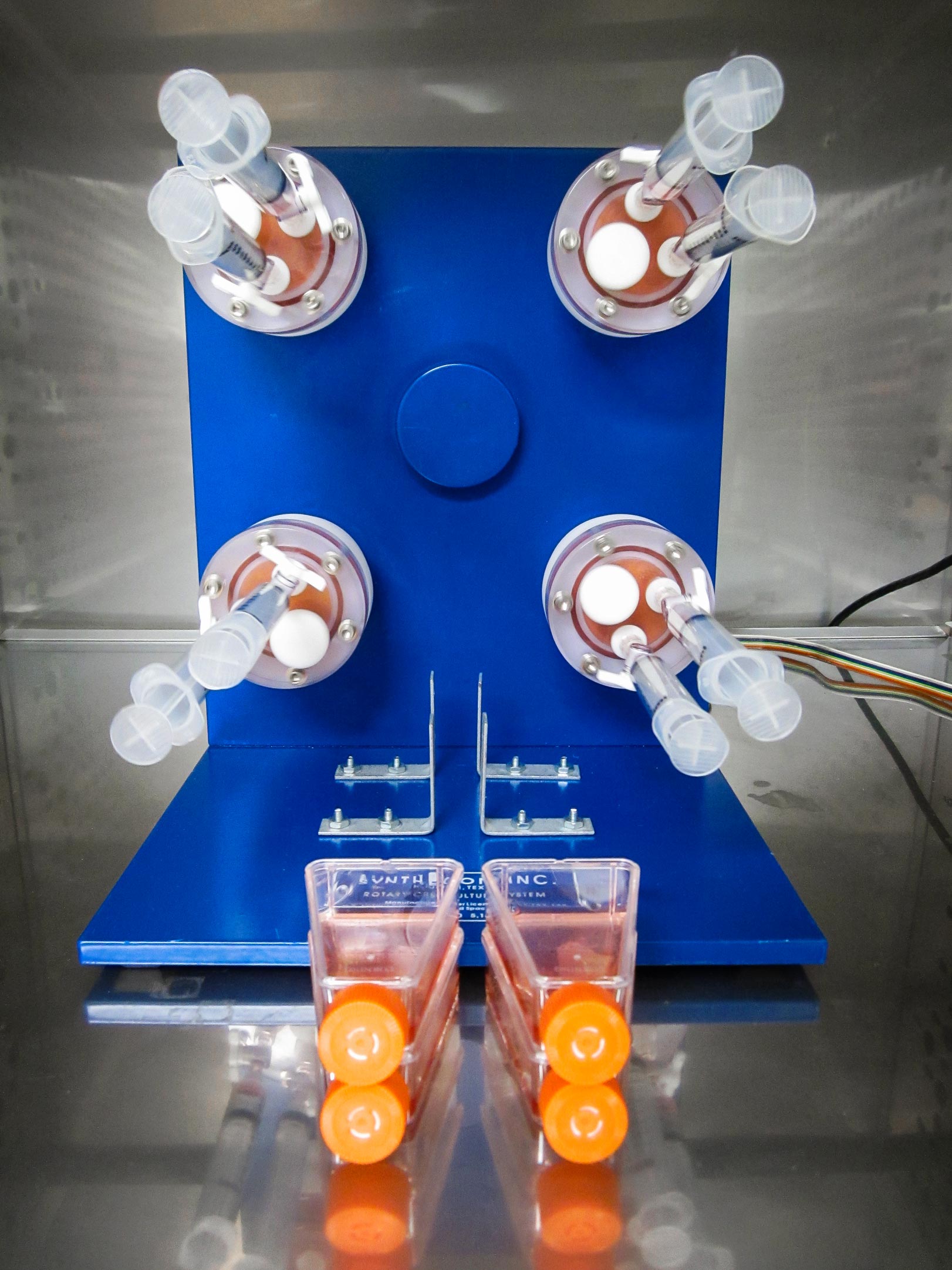USU Researchers Model Effects of Microgravity on Muscles During Spaceflight
News Release — LOGAN, UTAH — March 13, 2019 — Researchers at Utah State University are improving the ways we model muscle loss during spaceflight. Using a rotating cell culture device that simulates microgravity, a team of biological engineers tested various materials and methods to develop a protocol that mimics the physical changes seen in atrophying muscle.
Understanding muscle atrophy — the loss of muscle tissue due to the effects of immobilization or microgravity — is an important area of study accompanying a renewed interest in long-duration space travel. For answers, engineers and scientists are turning to in vitro modeling.
In a study published in BioMed Research International on Feb 17, USU biological engineering assistant professor Elizabeth Vargis and graduate student Charles Harding discuss their efforts to better understand muscle atrophy in microgravity conditions and how to model that loss on Earth. The researchers tested muscle cells from mice and compared the results to previous studies conducted using live animals under actual spaceflight conditions.
“The goal of this research is to better understand how muscle cells experience microgravity using resources available on Earth,” said Vargis. “We are excited to share our research with people inside and outside the spaceflight community.”
Muscle atrophy is a significant risk factor in human space travel. NASA requires crew members to exercise on missions lasting over 10 days, but there have been reports of muscle mass loss after just five days. Astronauts aboard the International Space Station undergo extensive exercise programs.
Vargis’ tests revealed some surprising outcomes. While several key genetic markers indicative of atrophy were detected, the results did not completely resemble those seen in animals.
“We concluded that the standard commercially available rotating device is not optimal for modeling changes in muscle mass loss due to changes in gravity,” said Vargis.
Vargis said her research lab will continue to modify the rotating cell culture device to improve similarity with spaceflight conditions, including the addition of radiation. Co-author Harding said the study offers important insight into how to better simulate microgravity conditions.
“Matching the response of a complex organism with cultured cells is a big challenge,” said Harding. “With further development, simulated microgravity systems may present a promising platform for investigation of atrophy pathways.”
###
Research Contact: Elizabeth Vargis | elizabeth.vargis@usu.edu | 435-797-0618
Writer: Jessica Jarman | eng.marketing@usu.edu


